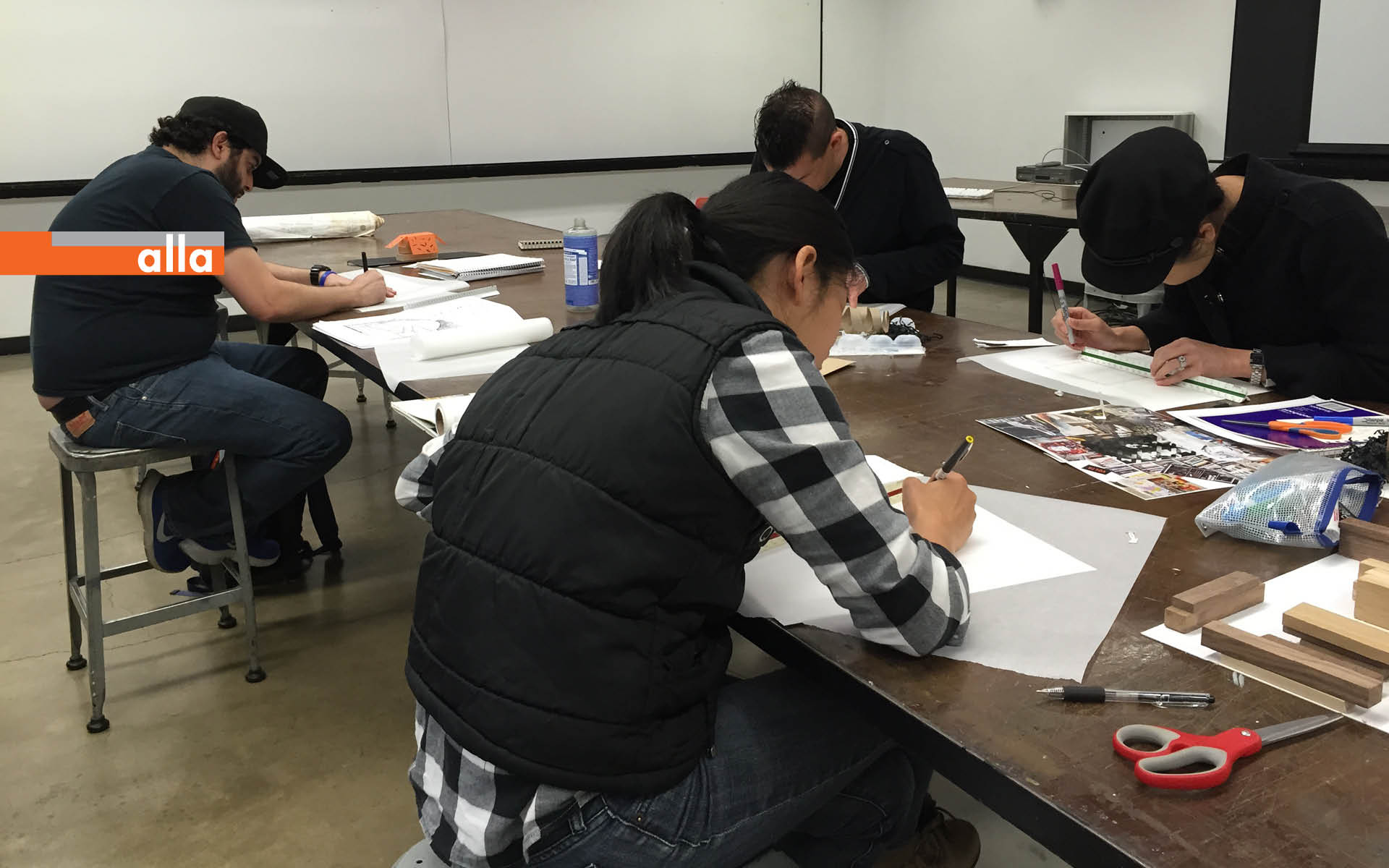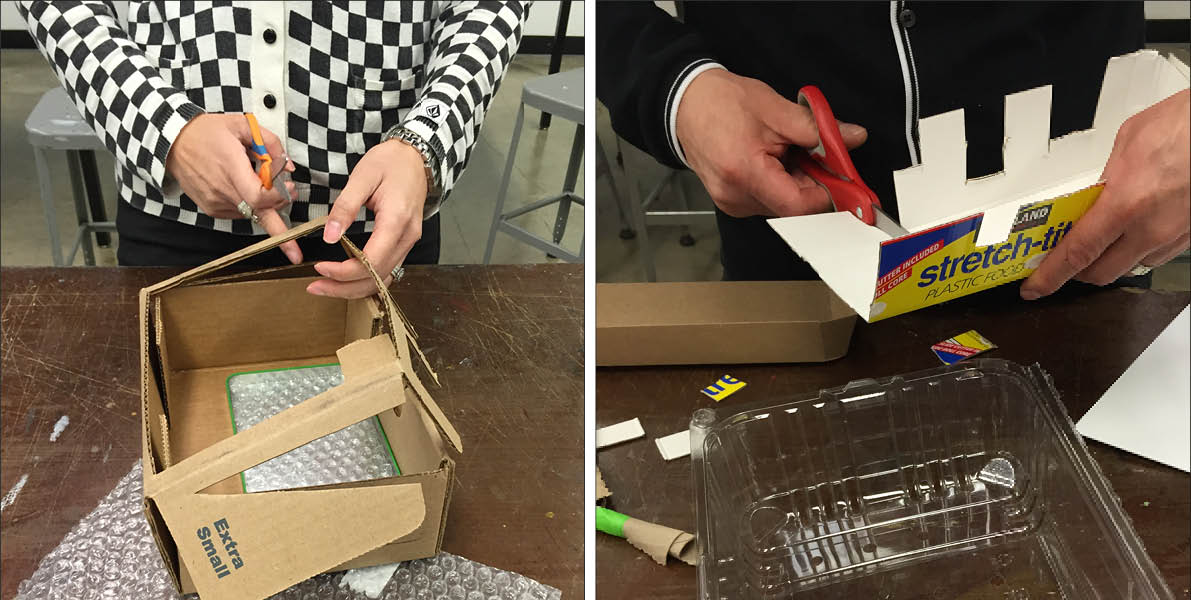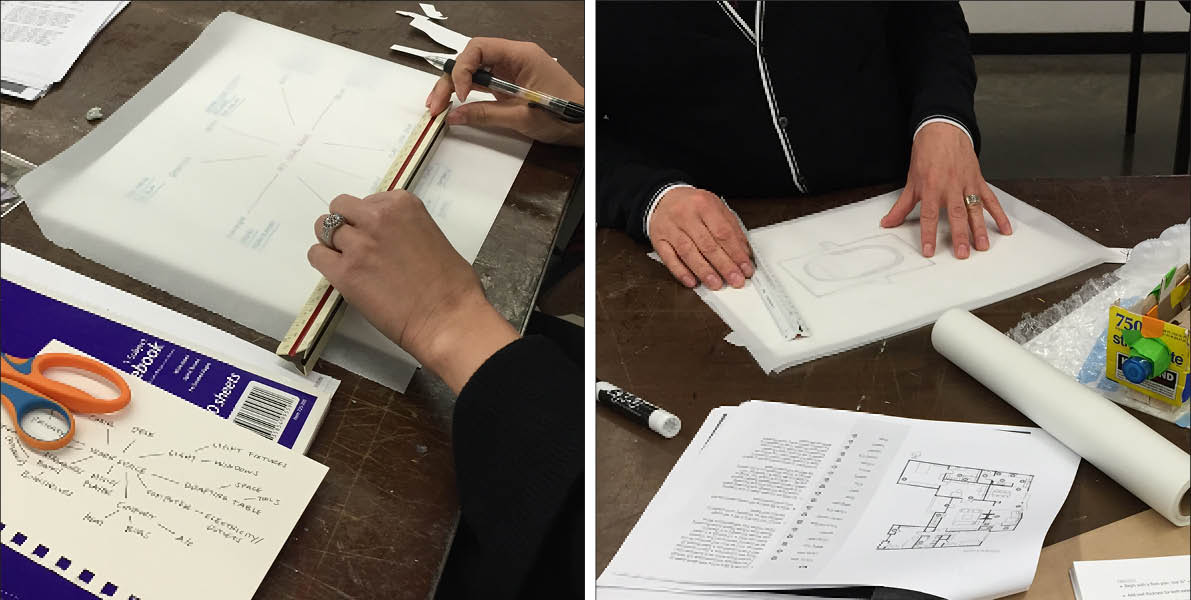
11-Step Method Helps You DIY Like an Architect
Day two of my DYI Like an Architect two-day workshop at Art Center College of Design. Everyone is very enthusiastic about the process of approaching a design project with the 11-step method.

Last week we started working on Step 05: 3D Parti Diagram. Today we are diving right in. Some participants even brought their own supplies! I am happy to see that besides collecting materials, they’ve been generating ideas! Everyone is eager to share insights.
Phillip’s Parti EVOLVE suggests a direction. This step lets him develop a spatial concept for the music room. He realized that it should feel like a floating vessel, a metaphor for creativity. He envisions a sunken space that is contained and balanced acoustically.
11-step method helps you approach any design project step-by-step
Step 06: Program
Sixth step of the 11-step method helps you articulate exactly what to plan for. You have completely understood your parti and now is the time to zero in on your design objectives. To DIY like an architect, you need to have a program. Program is the inventory of all of your requirements. With this step, you have another chance to practice mind mapping while setting up a framework that encompasses all of the components:
+ Organize elements from the standpoint of distinct spaces to accommodate activities you listed in the original mind map
+ Account for future needs, not yet anticipated
+ Consider the over-all order while marrying function with a particular space — from public to private
+ Meditate on it and reflect

As you are enumerating and itemizing, keep in mind your parti. Charmy’s parti is ORGANIC. She is designing a kitchen that is all about the “lofty idea” of bringing the outside in. She needs to write that into her program. Perhaps, it can be done with light and a choice of materials.
Sal’s parti is WARMTH and his parti diagram is a pictogram of a campfire. He might want to consider including a FIREPLACE — the heart of the room — in his program for a woodshop.
Step 07: Human Scale
Seventh step of the DIY like an architect method helps you understand how big all of the components ought to be. Human scale is something to be aware of. It has to do with relating physical dimensions of your body to the environment. Whatever you are designing will only feel right if it is compatible with the human proportions.
Next step is to create an accurate drawing of yourself at 1⁄4” = 1’-0” Use an architect’s scale – a ruler designed to allow for large areas to conveniently fit on a reasonable size of paper. Once you cut your drawing out, you can relate everything you will be designing to a model of you at 1⁄4” = 1’-0”
By the way, staircases, doorways, railings, work surfaces, seating, shelves, and other features have to be designed to correspond to your size. Conventions of human scale can be violated to achieve a monumental or aesthetic effect; however, that should be done deliberately.
Step 08: Scaled Drawings
Scaled drawings (plans, sections, elevations) are a systematic representation of your design in a way that others can understand. Drawn in proportion to actual size, they should be treated as integral parts of one coherent composition. The trick is to work simultaneously in plan, section and elevation — constantly going back and forth from familiar to fresh — shifting, tweaking and refining.
When you DIY like an architect

+ Begin with a floor plan
+ Use 1⁄4” = 1’0” as your scale
+ Add wall thickness for both exterior and interior walls
+ Draw wall openings such as windows and doors
+ Locate stairs; keep in mind that you need 11” in plan to go up 7”
+ Locate and draw bathroom and kitchen fixtures
+ Show scale and function by including built-in elements, such as counters, sinks, etc.
The way you move from room to room requires careful consideration. Create passages that are welcoming. Breathe life into circulation that ties spaces together. Avoid long hallways by connecting individual rooms with common spaces. Create points to walk towards.
+ Mentally walk through the spaces you are designing. Be mindful of barriers you might be creating.
+ Relate first and second levels to each other by overlaying drawings. Treat a staircase as an architectural feature. Place it in the key position.
You are quick to draw what’s familiar. However, when you DIY like an architect, it’s a good idea to step back and think across boundaries. What about the entry sequence and how it relates to the rest of the layout? What about service and served spaces: kitchen and dining room or bedroom and bathroom/dressing room?
To establish hierarchy, one needs to devise ways of directing attention by leading from general to specific while providing order-giving clues. Be very deliberate about door locations — they are extremely important!
Eighth step of the 11-step method focuses on being precise while conveying the feelings you have conjured up in the previous steps. It’s the time to make drawings to scale, keep geometry pure and align elements thoughtfully — you are thinking in terms of best use and efficiency. When you DIY like an architect, it’s your responsibility to justify every line you draw — “I like it” is not good enough of a reason.
Grace’s parti is MULTIFACETED. It’s about inviting in and taming chaos. It’s about organizing creative activity with light, function, even ways of coming in and out. She wants wall-to-wall bookcases and has to decide how deep they need to be. What about desks? Orientation to the sun? Where is this “family’s creativity hub” located in relationship to other rooms in the house?
Working on scaled drawings takes a lot of time and effort. The workshop is just an introduction. At the very end, we look at a basic set of architectural drawings. I walk everyone through the spaces, pointing out various conventions we were just learning about.
11-step method helps you navigate through making countless decisions
Additional tidbits and information on how to tackle subsequent steps can be found in downloadable DIY Like an Architect. I recommend it because approaching a design project without any guidance could be a daunting experience. 11-step method helps you navigate through making countless decisions by always focusing your attention on what really matters.



